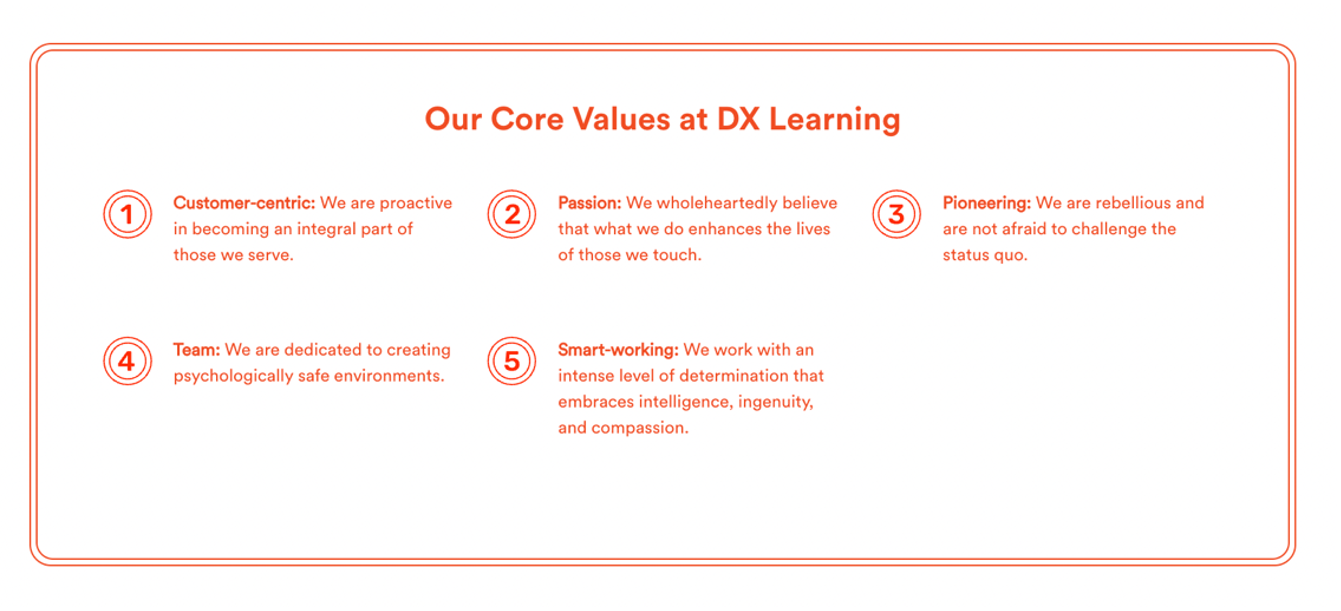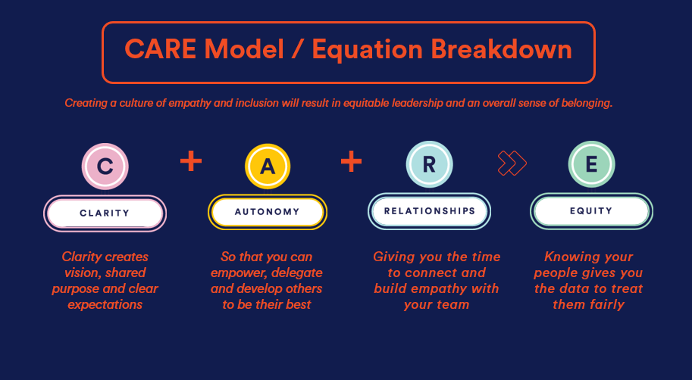Let's Talk Leadership - Bringing it Home

Between April 2015 and November 2019, I lost nearly everybody.
We had close to 90% attrition.
Since then, we have had 100% retention.
So, how did we do a complete 180 and turn this around?
Culture is a Mirror of Leadership
What have we learned about leadership since 2015?
We have developed over 30,000 leaders in over 200 companies in people-first leadership and the biggest lesson is this.
It starts at the top. Culture is a mirror of leadership.
If your senior leaders don't believe in modelling the same behaviors expected by everyone else, your best laid aspirations and plan for the culture you aspire will not be sustained.
You can’t start at the bottom, you can’t start in the middle, you’ve got to start at the top.
If you don’t get that piece right, you’re wasting your money.
A Working Culture Designed to Fail
At DX Learning we have had to go through numerous tough learning experiences to really understand how to keep our good ones.
It’s taken difficult situations and lessons throughout my time as a CEO and Founder to truly teach me how to be a better leader and culture champion. But isn’t that the beauty of leadership? It’s like art, cooking, and golf; you can never perfect it. There is only improvement and refinement.
In our previous article (how to keep the good ones) we asked you if you have a good employee worth keeping. The one(s) you cannot work without.
I’ve lost a few over the years. When I reflect on that time, I realize I was showing poor leadership and our company culture was missing.
Culture is a mirror of leadership. If you don’t have the right culture, you won’t have the right leaders demonstrating the right behaviors. So, at DX Learning, we were missing both, contributing to a working culture designed to fail.
It did.
Could it have been avoided? Simple answer. Yes.
Lesson 1: The Importance of Company Culture
Between 2015 and 2019, we didn't have a company culture. Work just “happened”.
The culture was just me as a leader, and I was running a million miles an hour, and allowing my natural instincts to lead.
I come from the school of hard knocks, and I wrongly assumed everyone else should be in that school too. Grit. I am saddled with it. I expected everyone to have as much grit as I have, and I got annoyed when they didn’t.
What I value, doesn’t have to be valued by others. In this case I did want others to have work life balance, but I did not. So I said one thing, yet did the opposite. What’s most important is that everyone is clear on the values as an organization as a whole, and as a leader, you ensure you hire, and fire based on those values. Don’t say one thing, expect one thing, hire on that thing, yet do the opposite.
At DX Learning we now have five core values:
Lesson 2: The Importance of Good Leadership
A poor company culture is down to poor leadership. Remember, culture is a mirror of leadership.
And reflecting on 2015 to 2019, I often demonstrated that poor leadership.
This was a big problem, and a massive contribution to the downfall of the prior DX Team.
Reflecting, I really didn’t know what was expected from me as a leader, and I didn’t know how to treat my people the way THEY wanted to be treated. When there is no north star (values), we do the best we can, and our selfish brain will take over. It’s telling you, do it my way! My way is not always the right way.
A leader’s responsibility is to model the values they promised and be the culture champion by holding others accountable to the same expectations.
Employees need to physically see what the CEO is saying about company values, and how they demonstrate those, and if they match up within the day-to-day actions of the leaders within the company.
If not? Well, how you can you expect your employees to? On top of that, the employees are sure as hell feeling a sense of unfairness and disgust due to that dissonance.
Lesson 3: Reflecting on Natural Bad Habits
Our brains are designed for efficiency for both energy and time.
So, to do this, the brain stores certain information in an unconscious area of the brain so it can access that information with significantly less effort.
This allows space for schemas. These are illogical natural biases…. also knows as bad habits.
Habits, we all have them.
As human beings our brain is wired to keep us alive, that’s why we’re naturally selfish and why leadership is so difficult, this is where bad habits come from. Leadership is about keeping others alive, which the brain is not designed for. Hence why there are so few great leaders. It’s hard! You must fight your natural instincts to do what is right for others.
These bad habits can range from poor communication to poorly defined plans, roles, and responsibilities, to the micromanagement of teams.
As a result, it creates unneeded stress, fear, and confusion, which generally results in poor performance throughout teams.
I realize, my natural bad habits took over in this time. I was very self-centered and selfish. I was a big contributor to the problem. I expected grit of everyone. I took over and did too much of the talking.
“I created a company designed to wipe out bad leadership, and I was that bad leader.”
I created a culture where it was difficult to give feedback, to have tough conversations, and to face conflict head on. Psychological safety didn’t exist.
“74% of employees report they are more effective at their job when they feel heard.”
- Forbes
What I should have been doing as a leader was to ask questions. To build trust and respect within our teams. Make a safe place for people to thrive, be their best selves, and speak up.
The Correct Way to Approach Leadership
-
Be a Servant Leader
“Leadership is 10% work and 90% relationships.”
As a servant leader, you must first listen, engage with curiousness, and care for your team by providing clarity, and allow room for autonomy. Be interested in your people. Stop trying to be interesting.
How? One method is to ask yourself these set of questions when providing an action for your team, to share the source of clarity, and align on expectations.
-
What does success look like for you?
-
What are your expectations?
-
What don’t I know about you that I should?
-
What am I doing that is inhibiting your success?
-
How do I help you be more successful?
-
Have ‘Empathy’ – meeting people where they are at without judgement
Do you know the answer to these questions about your team members?
-
How are they are really feeling?
-
What are they currently going through at home?
-
What do they do for fun outside of work?
-
What are the names of their pets and plants?
-
Are their Mums and Dads, okay?
-
What’s the school situation like?
-
What motivates them?
Knowing is not assuming.
To help build stronger relationships within your team please get to KNOW them on a human level. Not assume what you think, as you are wrong most of the time!
Ask questions. Listen. Pay attention. Reflect and react.
“76% of people who experience empathy from their leaders report they are engaged, compared to only 32% who experience less empathy.”
- Catalyst
CARE is also key to help build stronger relationships within work culture. Behave with CARE and people will CARE back.
C = CLARITY
A = AUTONOMY
R = RELATIONSHIPS
E = EQUITY
Looking Out for Your Team
What qualities did I lose and gain from this experience?
I lost my bad habits of pure grit and replaced that with more thinking time to be more smart working. That creates more time for me to be there for my team. I am CEO. Chief Empathy Officer. It’s all about empathy and relationships. That’s a great culture. To do that, I needed to provide more clarity than I am comfortable with.
I gained this insight...
- Get the right people on your team.
- Get the right people doing the right things.
- Get out of the way.
Of course, not everyone is going to feel completely under control within their roles and responsibilities.
This is where equity comes in.
As a leader, I make sure I spend my time with the people who need it most. It’s not equal. Its equitable. Providing time, energy, and resources to those that need it the most.
I CARE.
I finally have time in my calendar to talk to my team and genuinely listen.
It’s equitable. Those who need more of my time over others, get that time.
I'm giving more clarity, I am giving more autonomy, I am building strong relationships and I am providing equity.
As a result of this re-structure of my time, people are speaking up.
Recently, after years, we have implemented the red, amber, green method (RAG) at the end of our KPIs and goals phase.
Red = Alert
Amber = Caution
Green = Success
The purpose is to allow the opportunity for my team to share a status report on their current prospects and projects.
“In a time-starved business world, managers often lack time to delve into sheets of numbers. But colors are intuitive and require no interpretation. Even the fastest glance at a RAG report can explain whether the business is on track, or whether it is falling behind on certain measures.”
Matt, our DX Director of Design, recently told me we are red in product design.
This was our first red ever, and I loved it.
In that moment, I knew my team felt they could be open, honest, and vulnerable with me. Psychological safety was showing.
“Vulnerability is the birthplace of innovation, creativity, and change.”
- Brené Brown
As a result of this, I then could provide my product design team the support they needed from me as a leader.
I am aware we still have progress to make within our company culture, but we're getting there, and I love to witness the small but mighty drivers of success along the way.
How to Create More Psychological Safety in the Workplace
- Embed CARE into your teams
- Create a ‘we create versus I’ attitude
- Allow space for vulnerability
- Provide space for people to speak up
- Be interested in your people, and not trying to be interesting
At DX Learning, we now have a culture.
We have five clear core values that are embedded into our company and our teams.
Would you like this?
We offer the hands on-tools and support to create workplaces worth working for.
Insights

Subscribe to Our Monthly Newsletter!
For managers and talent professionals who truly believe in putting people first, the CARE to Win blog is your gateway to the latest insights on human-centric leadership. Join us as we champion the people first movement.
Need some time apart? Are we emailing you too often? Just give us your feedback, and we promise we’ll respond. We really do care. And if it’s still too much, just unsubscribe. It’s cool.
.jpg) Alex Draper
Alex Draper









